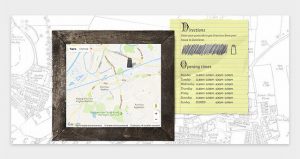History of pixel art. Past and future
![]() Today we bring to your attention a guest post about pixel graphics from Anna, which maintains a pretty interesting blog of the corresponding “pixel” subject.
Today we bring to your attention a guest post about pixel graphics from Anna, which maintains a pretty interesting blog of the corresponding “pixel” subject.
Pixel art (pixelart, pixel art) is a form of digital graphics created using a raster graphic editor, where each image pixel is manually edited.
For the first time in 1982, the term pixel art was used in Xerox Corporation by Adele Goldbert and Robert Flegal, but the graphic itself was used 10 years before in the same Xerox company. Also, to some extent, we can also consider pixel art ’and the occupation our grandmother-great-grandmothers were engaged in – cross-stitching, is it not true, it seems – one cross – one pixel =) (more…)
How microstock was born
 Microstock (microstock) – the budget segment of the stock photos, offering quality images for a penny, is rapidly gaining momentum. What is not surprising: such a cheap and affordable quality photo has never been before. Today, in microstock, photos are bought not only by regular customers of photobanks, but also by those designers who have not even looked in the direction of purchasing legal photos before. It is logical: before they could not afford it. Now it is available to everyone. (more…)
Microstock (microstock) – the budget segment of the stock photos, offering quality images for a penny, is rapidly gaining momentum. What is not surprising: such a cheap and affordable quality photo has never been before. Today, in microstock, photos are bought not only by regular customers of photobanks, but also by those designers who have not even looked in the direction of purchasing legal photos before. It is logical: before they could not afford it. Now it is available to everyone. (more…)
Monthly Archives: July 2019
How to make a footer site footer: design options, why you need it, tips
 Developers often overlook the fact that the footer for the site (translated from English footer / basement) is one of its basic elements. It can give more complete information about the company, and also performs various useful functions: it facilitates navigation, helps visitors of the web project to orient themselves, and will be useful for some commercial purposes. Continue reading
Developers often overlook the fact that the footer for the site (translated from English footer / basement) is one of its basic elements. It can give more complete information about the company, and also performs various useful functions: it facilitates navigation, helps visitors of the web project to orient themselves, and will be useful for some commercial purposes. Continue reading
The ideal form of authorization – how to do not need
 Recently, we posted a number of useful tips on creating effective registration forms on the site, and today we want to talk about the authorization / login unit. Recently, a lot of annoying and too “abstruse” of its implementations appear on the network. It is good when designers try to make unusual and beautiful login forms (see our selection), incorporating them into the overall concept of a web project, but it’s quite another thing when they overdo it with functionality. Sometimes it comes to the fact that popular password managers (in Chrome or from 1Password) just do not work. Continue reading
Recently, we posted a number of useful tips on creating effective registration forms on the site, and today we want to talk about the authorization / login unit. Recently, a lot of annoying and too “abstruse” of its implementations appear on the network. It is good when designers try to make unusual and beautiful login forms (see our selection), incorporating them into the overall concept of a web project, but it’s quite another thing when they overdo it with functionality. Sometimes it comes to the fact that popular password managers (in Chrome or from 1Password) just do not work. Continue reading



